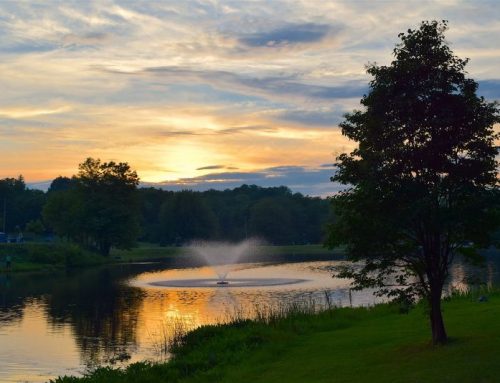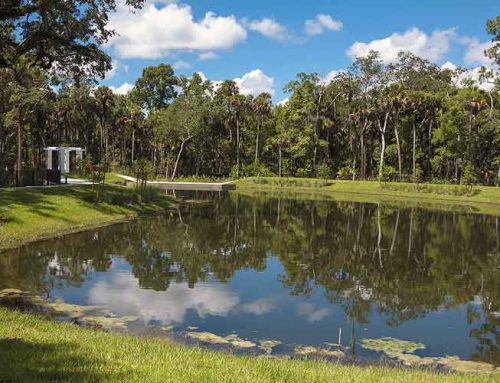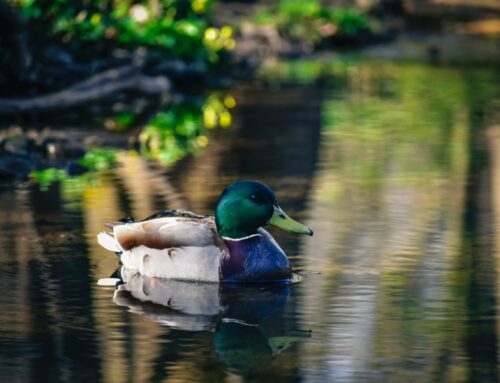As the summer sun starts to beat down and temperatures begin to creep up in Rochester and Western New York, upstate NY pond owners face a unique challenge: protecting their beloved fish from the potentially harmful effects of excessive heat. While a warm, sunny day might seem perfect for outdoor enjoyment, it can create stressful and even dangerous conditions for the aquatic inhabitants of your backyard pond. In this comprehensive guide, we’ll explore effective strategies to keep your pond fish safe and healthy during the hottest months of the year.
The Risks of Summer Heat in Upstate New York
Before diving into specific care tips, it’s crucial to understand why summer heat poses such a significant threat to pond fish. As water temperatures rise, the amount of dissolved oxygen in the pond decreases. This reduction in oxygen can lead to stress for fish, making them more susceptible to diseases and potentially causing suffocation in severe cases. Additionally, warmer water accelerates fish metabolism, increasing their oxygen demand precisely when oxygen levels are at their lowest.
High temperatures can also promote the growth of harmful algae and bacteria, further depleting oxygen levels and potentially releasing toxins into the water. In extreme cases, rapid temperature changes or prolonged heat waves can lead to fish kills, where entire populations succumb to the harsh conditions.
Keeping Pond Fish Safe: Managing Water Temperature
 One of the most effective ways to protect your pond fish from summer heat is by managing the water temperature. While you can’t control the weather, there are several strategies you can employ to keep your pond cooler and more comfortable for its inhabitants.
One of the most effective ways to protect your pond fish from summer heat is by managing the water temperature. While you can’t control the weather, there are several strategies you can employ to keep your pond cooler and more comfortable for its inhabitants.
Shade is your greatest ally in keeping pond fish safe. If possible, consider planting trees or tall shrubs around your pond to provide natural shade. For a quicker solution, you might install shade sails or floating plants like water lilies or lotus. These not only provide cooling shade but also add beauty to your pond landscape.
Another effective method is to increase water depth. Deeper water stays cooler, providing a refuge for fish during the hottest parts of the day. If your pond is relatively shallow, consider adding a deeper section where fish can retreat when surface temperatures rise.
Ensuring Sufficient Oxygen Levels
As mentioned earlier, warm water holds less dissolved oxygen, making proper aeration crucial during summer months. There are several ways to boost oxygen levels in your pond, ensuring your fish can breathe easy even on the hottest days.
Water movement is key to increasing oxygen content. Consider adding a pond fountain, waterfall, or stream to your pond design. Not only do these features add visual and auditory appeal, but they also create surface agitation that facilitates gas exchange, allowing more oxygen to enter the water.
For a more direct approach, air pumps and diffusers can be invaluable. These devices inject air directly into the water, creating bubbles that increase oxygen levels as they rise to the surface. Place diffusers in deeper areas of the pond where oxygen levels are likely to be lowest.
During particularly hot spells, you might need to supplement these methods. Adding hydrogen peroxide to your pond can provide a quick oxygen boost in emergency situations, but be sure to follow proper dosing guidelines to avoid harming your fish or beneficial bacteria.
Feeding and Nutrition in Hot Weather
Keeping pond fish safe means proper feeding practices which play a crucial role in keeping pond fish healthy during summer heat. As water temperatures rise, fish metabolism increases, but their ability to process food efficiently may decrease due to lower oxygen levels. This paradox requires a thoughtful approach to feeding.
During the hottest parts of summer, it’s generally advisable to reduce feeding frequency and quantity. Offer smaller portions 2-3 times a day rather than one large feeding. This approach helps prevent overfeeding, which can lead to poor water quality as uneaten food decomposes.
Choose foods that are easily digestible and high in quality. Many manufacturers offer special summer or wheat germ-based foods that are designed to be easier for fish to process in warm water conditions. These foods can help reduce the metabolic strain on your fish while still providing necessary nutrients.
It’s also important to observe your fish’s behavior during feeding times. If they seem lethargic or uninterested in food, it might be best to skip a feeding. Uneaten food will only decompose in the warm water, potentially leading to water quality issues.
Preventing Heat-Induced Diseases
The stress of high temperatures can make fish more susceptible to diseases and parasites. Vigilant observation and proactive care are essential to catch and address any health issues before they become severe.
Regularly inspect your fish for signs of distress or illness. Look for unusual behavior such as gasping at the surface, lethargy, or loss of appetite. Physical symptoms like red streaks on fins, white spots, or unusual growths should also prompt immediate action.
Maintaining excellent water quality is your first line of defense against diseases. Regular water testing and partial water changes are crucial, especially during hot weather. Fresh, cool water can help lower overall pond temperature while diluting any harmful substances that may have accumulated.
Consider adding beneficial bacteria to your pond regularly during summer months. These microorganisms help break down organic waste and compete with harmful bacteria, contributing to a healthier overall ecosystem.
In conclusion, keeping pond fish safe during summer heat requires a multifaceted approach that addresses temperature management, oxygen levels, feeding practices, and disease prevention. By implementing these strategies and remaining attentive to your pond’s needs, you can help ensure that your aquatic friends not only survive but thrive during the hottest months of the year. Remember, every pond is unique, so don’t be afraid to adjust these guidelines to best suit your specific situation. With proper care and attention, your pond can remain a vibrant, healthy ecosystem even in the face of summer’s most sweltering days.





